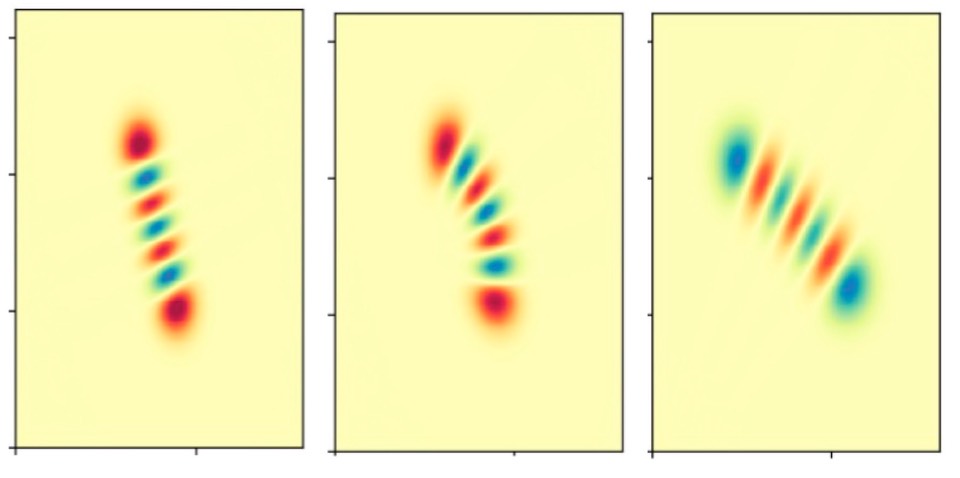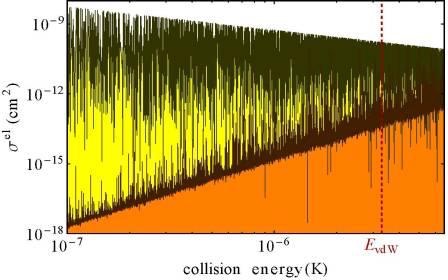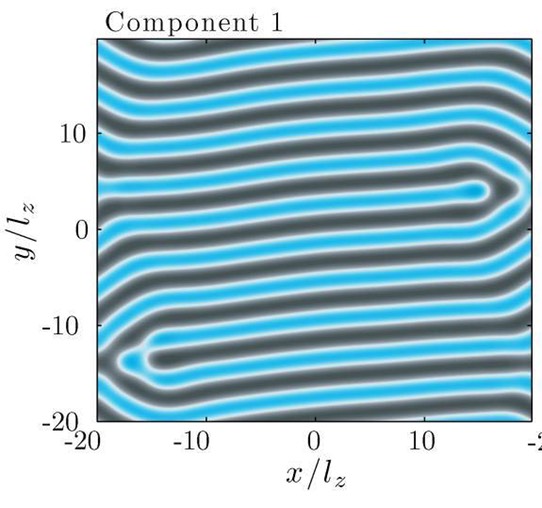Who - Are - You -? Dep’t
They always say, the fun in a Bose-Einstein condensate (BEC) is the way it wiggles. In a new study, Eli Halperin has followed the wiggles of a BEC composed of dysprosium atoms that are little magnets. He has cleverly chosen a coordinate system where it is clear to see how the BEC wiggles: Up and down? Sideways? Or something else? In experiments, the gas can be tuned form a liquid-like droplet to a gas. In the liquid (left panel below), excitations propagate mostly up-and-sown, along the long axis along which the liquid is polarized. In the gas (right panel), the gas alternates between wide-and-short, and narrow-and-tall, like a water balloon. And in the interesting transition region (middle), it doesn’t really do either: the excitation looks like a caterpillar reaching for a leaf.

Figure. No, you’re not seeing double - there are three figures here. On the left, a liquid-like dipolar BEC wiggles up and down, along its long axis. On the right, by the magic of scattering lengths, the BEC is more like a gaseous fluid that jiggles in a “quadrupole mode.” And in between? It’s a little bit of both, as the BEC navigates between the liquid and gas phases.
What used to be New
Unbroken Record Dep’t
We are pleased to report that our article, "Prospects for Bose-Einstein Condensation in Ultracold Molecules", Laser Physics 13, 1091 (2003), remains in a 30,996-way tie for the least-cited physics paper of all time!
The Grass is Always Greener Dep't
Balls of clay may stick to each other when they collide. This is because the original energy they had before the collision gets so mixed up in heating the clay that the balls have none left to separate. Molecules, particularly small ones, don't generally act this way, since there are not many places for the energy to disappear into. However, Michael Mayle, Brandon Ruzic, and Goulven Quéméner have discovered that at ultralow temperatures, some might actually stick. For example, RbCs molecules (cross section below) may have myriad opportunites to waste energy in rotations and vibrations, rather than in getting away from each other. They should eventually escape this mess, but on time scales long enough to affect the experiment.

Figure. We're not working on your lawn again. This is an estimated cross section for scattering of RbCs molecules at ridiculously low collision energies. It is full of resonances, which may enable molecules to stick together for a while. (You may want to water that brown spot, though).
Oil and Water Dep’t
It is widely known that mixtures of Bose-Einstein condensates (BEC's) can "phase separate" under circumstances where the mutual repulsion of the two BEC's overcomes their self-repulsion. Typically, one BEC goes to one side of the enclosure, and the other goes to the other side. Now, along with Chris Ticknor and Eddy Timmermans, Ryan Wilson has expanded this notion to include dipolar BEC's that possess a roton instability. In this case the separation produces fine patterns like the one shown below.

Figure. Do not adjust your picture. This is an example of the snake-like pattern formed when a dipolar Bose-Einstein condensate (blue) separates itself from a non-dipoalr BEC (black). The way in which this separation happens revelas the "hidden structure" inside the gas.
